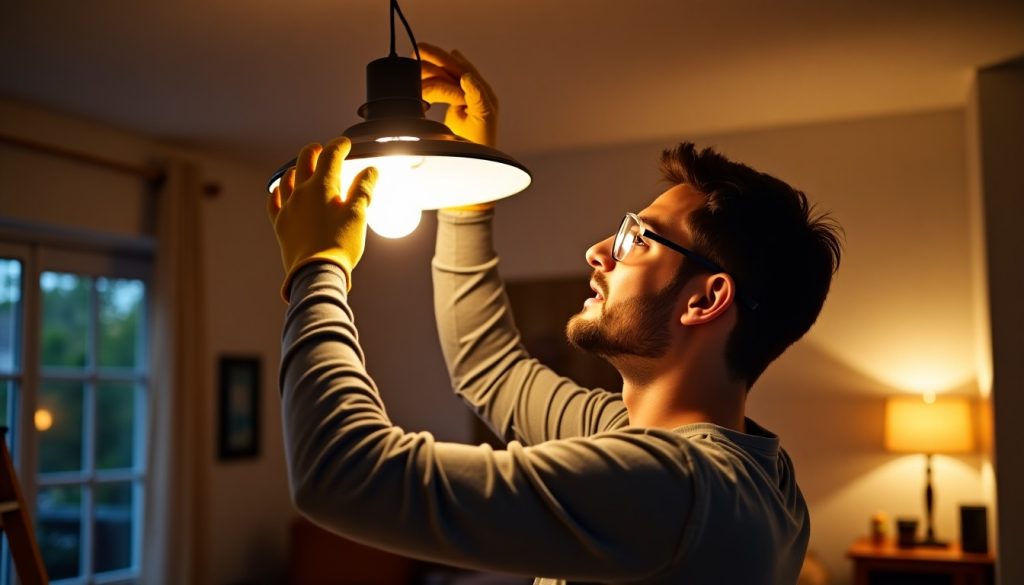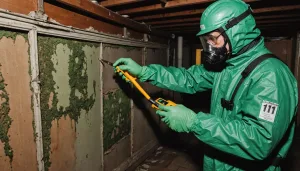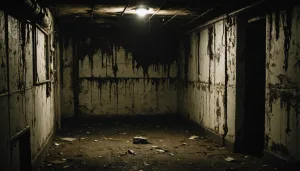Engaging in electrical work within your home can be both empowering and cost-effective; however, it’s essential to differentiate between tasks that you can manage on your own and those that require professional intervention. Understanding basic electrical tasks that are safe and feasible to DIY can help maintain your home safety while giving you the satisfaction of tackling home improvement projects.
Basic electrical tasks typically involve non-complex undertakings that do not require extensive electrical knowledge or the need to alter the original wiring of your home. Successfully handling such tasks hinges on your ability to navigate simple electrical procedures with caution. Familiarizing yourself with these tasks not only enhances your DIY repertoire but also ensures you adhere to safety standards.
Here are some basic electrical repairs and installations typically considered suitable for DIY enthusiasts:
- Changing Light Fixtures: Replacing light fixtures is generally straightforward, involving the disconnection of wires from the old fixture and reconnecting them to the new one. However, ensure the circuit breaker is off to avoid electrical shocks.
- Installing Ceiling Fans: Similar to light fixtures, ceiling fan installation requires basic wiring skills and the use of standard tools. Ensure your ceiling electrical box is rated for fan installations beforehand.
- Replacing Outlet Covers: Swapping out old or damaged outlet covers with new ones is a simple task that requires only a screwdriver.
- Testing and Replacing Fuses and Circuit Breakers: While testing these devices can often be easy, replacing them requires shutting off the power and following replacement instructions closely to ensure functionality and safety.
Despite the straightforward nature of these tasks, adhering to safety protocols should be your utmost priority. Using appropriate safety gear such as gloves, goggles, and work boots can prevent mishaps. Moreover, possessing basic electrical tools is crucial. A simple toolkit might include:
- Voltage Tester
- Wire Strippers
- Screwdrivers
- Pliers
To help differentiate between safe DIY tasks and those needing professional help, consider the following comparison table:
| DIY Electrical Tasks | Tasks for a Professional |
| Changing light bulbs, fixture replacements, outlet cover replacements | Rewiring/Adding circuits, service panel upgrades, fixing major electrical faults |
| Testing and replacing fuses, small appliance repair | Whole house rewiring, installation of complex appliances, diagnosing hidden electrical faults |
Knowing your limits and recognizing the type of tasks that you can safely execute is crucial in maintaining home safety and avoiding potential hazards. Armed with this knowledge, you can enjoy the benefits of DIY projects without compromising on safety or quality.
Recognizing complex electrical issues
When it comes to recognizing complex electrical issues, it’s important to understand that these problems not only require a deeper understanding of electrical systems but also pose significantly higher risks. Undertaking such tasks without the proper expertise and experience can jeopardize home safety, leading to costly damages or even dangerous situations. Here are some steps you can follow to identify complex electrical issues that necessitate professional intervention:
1. Identify Frequent Circuit Breaker Tripping:
– Observe if any of your circuit breakers are constantly tripping. While an occasional trip might be normal, repeated occurrences are a sign that your electrical system is overloaded or there is a short circuit. This is not a DIY issue as it could point to a much larger problem within your electrical system.
2. Notice Dimming or Flickering Lights:
– Pay attention to any lights that dim or flicker without apparent cause. This could indicate that circuits are either overloaded or experiencing loose or deteriorating connections. Resolving these issues often requires the expertise of a professional electrician to trace and rectify the underlying problem.
3. Detect Outlets or Switches that are Warm or Hot:
– Feel your switches and outlets. If they’re warm to the touch, it may indicate faulty wiring or an overload. It’s crucial not to ignore these warnings, as they can lead to electrical fires. A certified electrician can assess and fix these hazards safely and efficiently.
4. Smell Burning Odors or Acrid Smell:
– A burning smell near any outlet or switch is a critical red flag. This can suggest that wires are overheating, potentially leading to more serious issues like a fire. It’s vital to immediately turn off power to the affected area and consult a professional to diagnose and mitigate the risk.
5. Hear Unusual Sounds:
– Listen for buzzing or humming sounds from outlets or wiring. These sounds might be indicative of loose prongs, faulty wiring, or other defects within the electrical system. Such conditions necessitate inspection by an experienced electrician to prevent danger and restore home safety.
6. Find Discolored Outlets or Switch Plates:
– Inspect outlets and switches for discoloration or scorch marks, which are unmistakable signs of undue heat distribution and possibly faulty wiring inside. An electrician can help determine the cause and perform necessary repairs to ensure safety.
7. Evaluate Inadequate Wiring:
– Consider whether your home’s wiring is outdated, especially in older constructions. Homes built decades ago might not be equipped to handle modern appliance loads, necessitating rewiring. Addressing wiring inadequacies requires the specialized skills of a licensed electrician to bring the wiring up to current safety standards.
By understanding these tell-tale signs and recognizing the complexity of such electrical work, you can effectively safeguard your property and well-being. Pursuing professional help for these tasks ensures compliance with safety standards, thereby maintaining a safe and functional home environment.
Evaluating safety risks
When contemplating electrical work, it’s crucial to consider the inherent safety risks involved, particularly when deciding whether to embark on a DIY project or to hire a professional. Safety should always be a top priority, and understanding the potential hazards can help guide this decision-making process.
Electricity is inherently dangerous, and even seemingly simple tasks can pose substantial risks without the necessary precautions and expertise. Touching the wrong wire or failing to cut the power properly can lead to serious injury or, in worst-case scenarios, fatal electrocution. Understanding these risks is the first step towards making informed decisions about home electrical projects.
A key consideration in evaluating safety risks is the potential for electrical fires. Faulty wiring, overloaded circuits, and improper installations are common culprits that can result in electrical fires, endangering both your home and those within it. For instance, a minor wiring mistake in a DIY project might go unnoticed until it causes a serious problem months down the line. The potential consequences can be severe, both in terms of safety and financial cost.
Another important aspect to consider is how DIY electrical work may affect your home insurance. Many insurance policies have strict guidelines about who can perform electrical work on a property, often requiring that it be conducted by a licensed professional to maintain coverage. Failing to comply with these stipulations could invalidate your policy, leaving you unprotected in the event of an electrical mishap.
Additionally, it’s essential to think about the long-term reliability and safety of your home’s electrical system. Professional electricians are trained to adhere to safety standards and building codes, ensuring that the work they perform is not just effective but also safe and up to standard. DIY attempts, without the same level of expertise, may result in subpar work that could lead to issues like frequent tripping breakers or power outages, compromising home safety and functionality.
Furthermore, when evaluating safety risks, consider the tools and equipment needed for electrical work. Professionals have access to specialized tools that not only facilitate safe work practices but are also required to complete the job effectively. Without the right tools, DIY enthusiasts may struggle to perform tasks safely, increasing the risk of injury or error.
Ultimately, evaluating safety risks involves balancing the desire for cost savings and the satisfaction of DIY work against the potential hazards and necessary expertise that professional electricians bring. Ensuring home safety is paramount, and in many cases, investing in a professional’s services can provide peace of mind and long-term assurance that your electrical systems are reliable and safe.
Assessing your skill level
When considering whether to take on electrical work yourself or hire a professional, it’s crucial to assess your own skill level honestly. Understanding your personal capabilities and limitations is a key factor in ensuring both the success of your DIY endeavors and the ongoing safety of your home.
First, reflect on your past experience with similar projects. If you have previously handled straightforward electrical tasks such as replacing light switches or installing new light fixtures with confidence and without issues, you may possess the foundational skills to tackle slightly more advanced projects. However, if your own experience is minimal and lacks depth, it may be prudent to stick with simpler tasks or consult with an expert before proceeding with more complex electrical work.
It’s also important to recognize the limits of personal expertise. DIY electrical tasks require a certain level of technical understanding and manual dexterity. If you find yourself puzzled by electrical schematics, struggling to distinguish between wires, or uncertain about procedures like grounding and circuit routing, these are clear indicators that you need further education or professional assistance. Knowing how to navigate common challenges associated with electrical tasks, like addressing minor wiring errors or understanding power distribution, is crucial to avoid potential hazards.
Another essential consideration is your access to the right tools and the confidence to use them effectively. Electrical work is often tool-intensive, necessitating devices like voltage testers, wire strippers, and multimeters. Having these tools is only part of the equation; knowing how to use them safely is equally important. If you’re not confident with these tools, it’s a sign that professional input is necessary to ensure home safety.
Moreover, the learning resources you’re using should offer accurate and reliable guidance. There’s a wealth of DIY electrical advice available online, but not all of it is created equal. Ensuring that you’re relying on reputable sources can make a substantial difference in the quality and safety of your work.
Consider also the time you can dedicate to learning and executing these tasks. DIY projects require patience, diligence, and often a significant time commitment. If you’re constrained by time, it may be more efficient and safer to hire a professional who can ensure the job is done quickly and correctly.
Ultimately, self-assessment can prevent potentially dangerous situations and expensive repairs down the line. By honestly evaluating your skill level and understanding the complexity of the task at hand, you can determine whether a DIY approach is feasible or if enlisting the help of a professional is the wisest course of action. Recognizing your limitations and acting upon them is the hallmark of a responsible DIY enthusiast committed to maintaining home safety.
Choosing the right professional electrician
When selecting a professional electrician for your needs, several vital considerations can help guide your decision to ensure you receive quality service and maintain home safety. A key step in this process is researching and verifying the electrician’s credentials. It’s critical to confirm that the electrician is licensed and registered with the relevant governing body in your location. Proper licensing ensures that the electrician has received the necessary training and complies with industry standards, which is essential for safe and effective electrical work.
Experience is another important factor to take into account. Seek out an electrician who has a proven track record in handling the specific type of electrical work you require. Whether it’s rewiring an old home, installing electrical panels, or troubleshooting complex circuitry, an experienced professional can bring valuable expertise and problem-solving skills to efficiently and safely complete the job.
Consider asking for recommendations from friends, family, or neighbors who have recently employed an electrician. Personal referrals can provide insights into the professionalism, reliability, and quality of work you can expect. Additionally, online reviews and ratings on trusted platforms can offer further reassurance about the electrician’s reputation and service delivery.
Understanding the insurance coverage of the electrician or the electrical contracting company is also crucial. Verify that they hold both liability insurance and worker’s compensation insurance. This is important because it protects you from being financially responsible for any damages or injuries that may occur during the project.
Communication is another often-overlooked aspect when choosing an electrician. Effective communication is essential for understanding the scope of work, timelines, and any potential challenges that may arise. An electrician who communicates clearly and promptly can contribute to a smoother project experience, reducing the likelihood of misunderstandings and ensuring that your expectations are met.
Lastly, always obtain multiple quotes before making a decision. This not only allows you to compare pricing but also provides a clearer picture of the market rate for your specific electrical work. Be wary of quotes that seem unusually low, as they may indicate a lack of experience or the use of substandard materials, both of which could compromise home safety.
In conclusion, deciding whether to DIY or hire a professional electrician hinges largely on assessing the complexity of the task, your own skill level, and the importance of safety. For straightforward issues, a confident DIY approach might suffice, but for complex or risky electrical work, a professional’s expertise not only ensures compliance with safety standards but also provides peace of mind. Choosing the right electrician involves careful consideration of their credentials, experience, and reputation, ensuring that your home remains both safe and functional in the long run.





